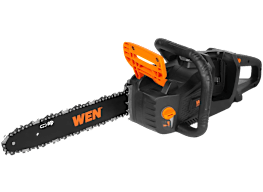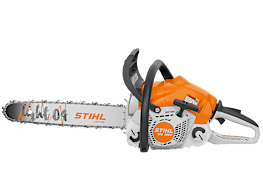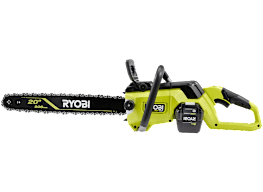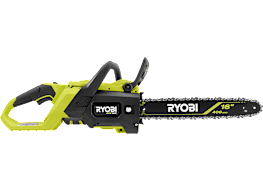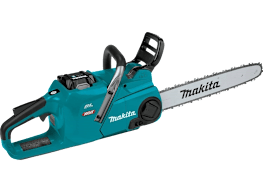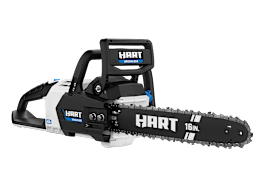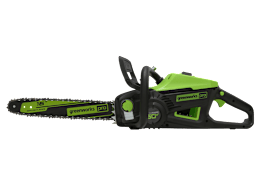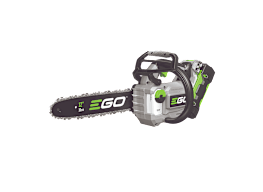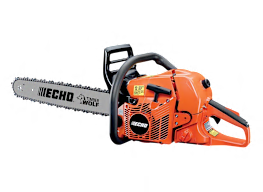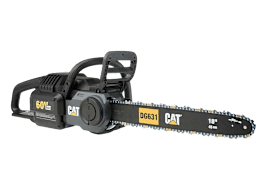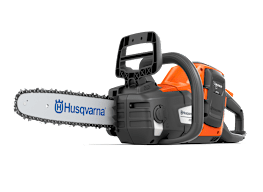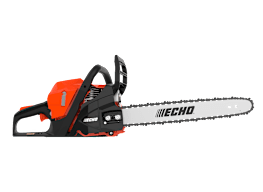
How to Choose a Chainsaw

Senior Home & Tech Editor
Chainsaws are powerful tools. And handled with the proper safety know-how, a chainsaw can be an indispensable labor-saver, one that can clear through branches too thick for electric loppers, fell a tree that’s threatening a roof, or cut up firewood.
Chainsaws come in a range of sizes, from small electric models (some with cords, most with batteries) to hefty gas-powered models intended for heavier work. But don’t assume that all gas saws are stellar, nor that electrics can’t keep up. “One huge shift we’ve seen is the sheer number of battery-powered electric saws on the marketplace—and the improvements in their performance,” says Matt Schimmenti, who leads Consumer Reports’ chainsaw testing. “The best electric models now cut every bit as well—and sometimes better—than many of the lighter-duty gas-powered saws we’ve seen.”
Prices often correlate with size. Larger saws with a long cutting bar (the flat metal arm that drives the cutting chain) tend to be pricier than smaller models made for modest limbs. But bigger isn’t always better—a larger saw can tackle bigger tasks, but it’s also heavier and tougher to control.
We delve into the pros and cons of each type below. But first, it’s important to understand how Consumer Reports tests chainsaws in order to understand what sets these tools apart.
How We Test Chainsaws
To evaluate chainsaws, we consider how well they cut, how easy they are to handle, and how safe they are to operate.
Using 10-inch-thick oak beams, we time how long it takes for each saw to work its way through the wood. We use oak because it’s one of the hardest woods most users will encounter on their property, and it makes for a particularly demanding test that reveals differences among models. Those models that cut fastest earn a higher rating for cutting speed.
We assess how each saw handles, considering its weight and how easily it makes horizontal and vertical cuts. We also check for any vibration.
To judge ease of use, we consider several factors, including how simple it is to start, adjust, and maintain a saw. We also assess safety features, check for any kickback during cutting, and evaluate whether a model’s exhaust parts, such as the muffler, become excessively hot, which can pose a burn hazard.
We add ratings for predicted reliability and owner satisfaction, which reflect what thousands of CR members have told us about their experiences with new chainsaws they purchased. Specifically, they reported whether their chainsaws ever broke or stopped working properly during the first five years of ownership, as well as whether they would recommend their chainsaw to a friend or family member.
Shopping Chainsaws by Type
Here we drill down into each type of chainsaw. We’ve also included electric loppers, which are a good option for small jobs and are safer to use when you’re cutting something above your shoulder level.
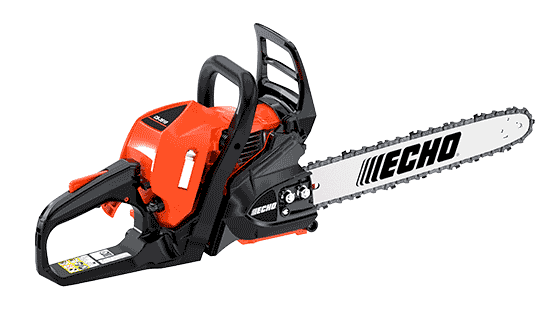
Gas-Powered Chainsaws
These tend to cut quickly and smoothly. Their fast chain speed means less pressure is required from the user to make clean cuts compared with some underpowered electric models, making them a good bet for heavy-duty work such as felling large limbs and trees. They’ll also run continuously if you keep adding gas, making them the best choice if you have hours of work ahead of you. However, most are heavier and noisier than their electric counterparts. They also require regular fueling and servicing of the engine’s air filter and spark plug, and they emit exhaust fumes. Like all gas-powered tools, gas chainsaws produce potentially deadly carbon monoxide, so you should never operate one indoors. Starting one requires several hard yanks on a pull cord. Chain-bar lengths are typically 16 to 18 inches for homeowner saws, while those for professional models are longer.
Cost: $140 to $420
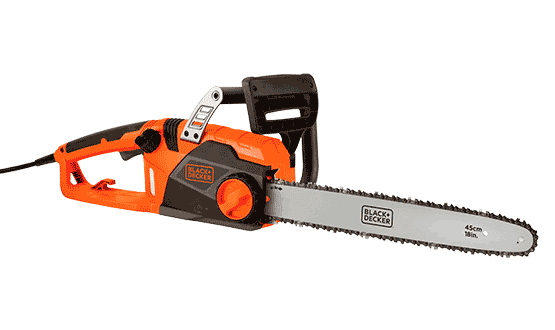
Corded Electric Chainsaws
These saws have become much less appealing now that battery-powered saws perform so well. Corded saws typically cost less than other models. They weigh less, and they all start effortlessly: Just plug them in and squeeze the trigger. But their slower sawing speed limits them to lighter-duty chores, such as shaping hedges or trimming the occasional small tree limb. Their power cord keeps you tethered to the nearest electrical outlet. You’ll also need a 14-gauge or heavier 12-gauge extension cord to achieve the necessary amperage for optimal performance. Keep in mind that extension cords of that size max out around 100 feet, so you won’t be able to cut any farther than that distance from an outlet, and you should never string multiple extension cords together—it poses a fire risk.
Cost: $40 to $300
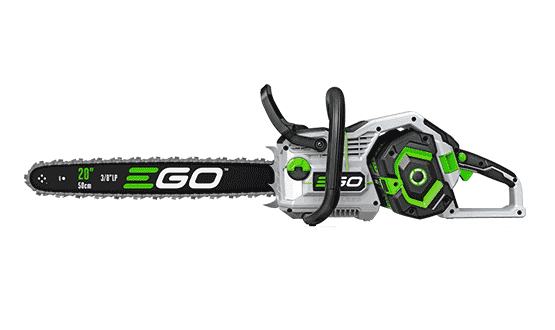
Battery-Powered Electric Chainsaws
These saws cost about the same as gas saws, and our most recent tests show that their performance can be as good as—and sometimes better than—that of a gas model. Run time is determined by the battery’s voltage and amp-hour rating. You can expect approximately 30 to 40 minutes of semi-continuous cutting on a single charge, and about 60 minutes to recharge the battery. For reference, the best battery-powered saw in our ratings cut through a 10-inch-thick oak beam 122 times on a single charge. These saws pack enough power to cut large tree limbs and small trees. If you have other battery-powered outdoor gear, consider purchasing a chainsaw from the same brand, as the batteries are usually interchangeable.
Cost: $180 to $330
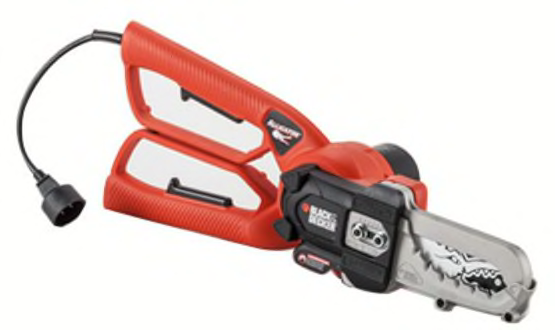
Electric Loppers
If using a chainsaw strikes fear in your heart, but you still need to cut through the occasional small limb, consider a light-duty power lopper. With these types of saws, the cutting apparatus is mounted a couple of feet away from the hand grips and shielded within a pair of safety jaws. (CR doesn’t currently test this type of saw.)
Cost: $70 to $150
Chainsaw Safety
Chainsaws are involved in more than 27,000 accidents annually, according to the Consumer Product Safety Commission. The most common injuries are lacerations, particularly to the arms and legs, and some of the most serious injuries occur when the saw’s chain snags and kicks back toward the operator’s chest and head. Chainsaws have safeguards, including an automatic chain brake, that are designed to reduce the hazard of kickbacks. But even if you have a model that’s fully loaded with safety features, you need to take some safety precautions.
Dress Smart
Start with snug-fitting clothing and sturdy, preferably steel-toed, work boots. Shield your legs with cut-resistant chaps and the backs of your hands with protective gloves, and wear a helmet with a face shield. You’ll also need hearing protection because practically all saws, including electric models, exceed the 85-decibel level at which hearing damage can occur.
Get a Grip and Stay Grounded
Grip gas-powered saws firmly when pull-starting and keep the saw on the ground; most handles include a spot for securing the saw with one foot while pulling the starter cord. Never saw while on a ladder or use the saw above shoulder height. If you must cut above shoulder height, use an electric lopper, whose encased cutting jaw makes it safer to use than a chainsaw, or hire a pro. And never saw using the tip of the chain and bar, where kickback can occur.
Maintenance Is Key
Upkeep is also an important factor in chainsaw safety. A chain that’s properly sharpened, tensioned, and oiled speeds cutting and helps prevent kickback while reducing wear on the chain and the bar on which it rides. A chain that’s too loose can also slip off the bar and toward the operator as it spins.
Remember Emissions
While most injuries associated with chainsaws are lacerations and amputations, all gasoline-powered tools produce carbon monoxide, a colorless, odorless gas that’s potentially fatal. Never run a gasoline-powered tool indoors or in any enclosed space.
Chain Saw Maintenance
Keeping your chainsaw in good working order will not only prolong its life but also help ensure its safe and efficient operation. Whether you choose a gas-powered or electric model, a little regular care goes a long way.
Chainsaws have the potential to cause serious injury. That’s why you should always wear protective gear—including gloves, goggles, hearing protection, and cut-resistant chainsaw chaps—when using and maintaining your saw, as teeth on the blade are still sharp even if the chain is not moving.
Here are some tips to help keep your chainsaw operating safely, smoothly, and efficiently.
Gas Chainsaws
Gas models have more moving parts than electric saws, so they require slightly more upkeep.
• Check fuel and oil: Always use the correct fuel mix as recommended by the manufacturer. If the saw won’t be used for an extended period, either empty the gas tank or add a fuel stabilizer to avoid using stale fuel that could make the saw hard to start or keep it from running smoothly.
• Inspect chain tension and sharpness: A loose chain can derail, while an overly tight one strains the bar and motor. Adjust the tension until the chain snaps back slightly when you pull it away from the bar. (Wear gloves.) One tip our testers use is that the chain should lift only as much as its own height. Don’t over-tighten the chain.
• Clean or replace the air filter periodically: Dust and wood particles can quickly clog the filter, so check it often and clean or replace it as needed to maintain airflow and performance.
• Check the spark plug: Inspect the spark plug for wear or carbon buildup, and replace it, following the manufacturer’s recommendation, or sooner if starting becomes difficult.
• Make sure the chain is lubricated: Proper lubrication reduces friction and extends the life of both the bar and chain, so keep the bar and chain oil reservoir filled.
• General maintenance: Remove wood chips and sawdust from the bar groove, sprocket, and around the air intake. Clean the exhaust and cooling fins to prevent overheating. Tighten any loose nuts, bolts, and screws before each use.
Electric Chainsaws
Electric chainsaws, both corded and battery-powered, are easier to maintain, but they still need attention.
• Inspect chain tension and sharpness: Just like gas models, the chain must be kept sharp and properly tensioned to cut cleanly and safely.
• Make sure the chain is lubricated: Most chainsaws of all types have an automatic oiler, but you’ll need to keep the reservoir filled with bar and chain oil.
• Inspect all cords. For corded models, check for any cuts, frays, or other signs of wear and tear. Use an outdoor-rated extension cord of the proper gauge.
• Maintain batteries: Battery-powered models should be charged using the charger supplied or recommended by the manufacturer. If possible, avoid completely draining the batteries, and store them partially charged if they won’t be used for extended periods. When not in use, store the batteries in a cool, dry place, and avoid extreme temperatures.
General Maintenance Tips
Proper maintenance extends the life of your chainsaw, whether it’s gas or electric, and ensures safe, efficient performance. Here are detailed tips for both types:
• Clean after each use: Remove debris from the housing, vents, and bar groove.
• Check safety features: Ensure the chain brake, trigger lock, and hand guards work properly.
• Sharpen regularly: A dull chain forces the motor to work harder and increases the risk of kickback. Learn to sharpen the chain yourself or have it professionally serviced.
• Inspect the bar: Flip it occasionally to prevent uneven wear.
• Protect the chain: Lightly oil the chain and bar to prevent rust.
• Cover the bar: To protect the chain and prevent accidents, use a bar cover (scabbard) or case. Some models come with just a scabbard and no case.
Chainsaw Safety Features
Chainsaws are simple tools, essentially comprising an engine or a motor, a handle, and an oblong metal piece called the bar that guides the cutting chain. There are numerous safety features, and the more a model has, the better. We assess those features and work them into our safety rating for every model we test. Here are the crucial safety features to look for on any saw.
- 1
- / 9
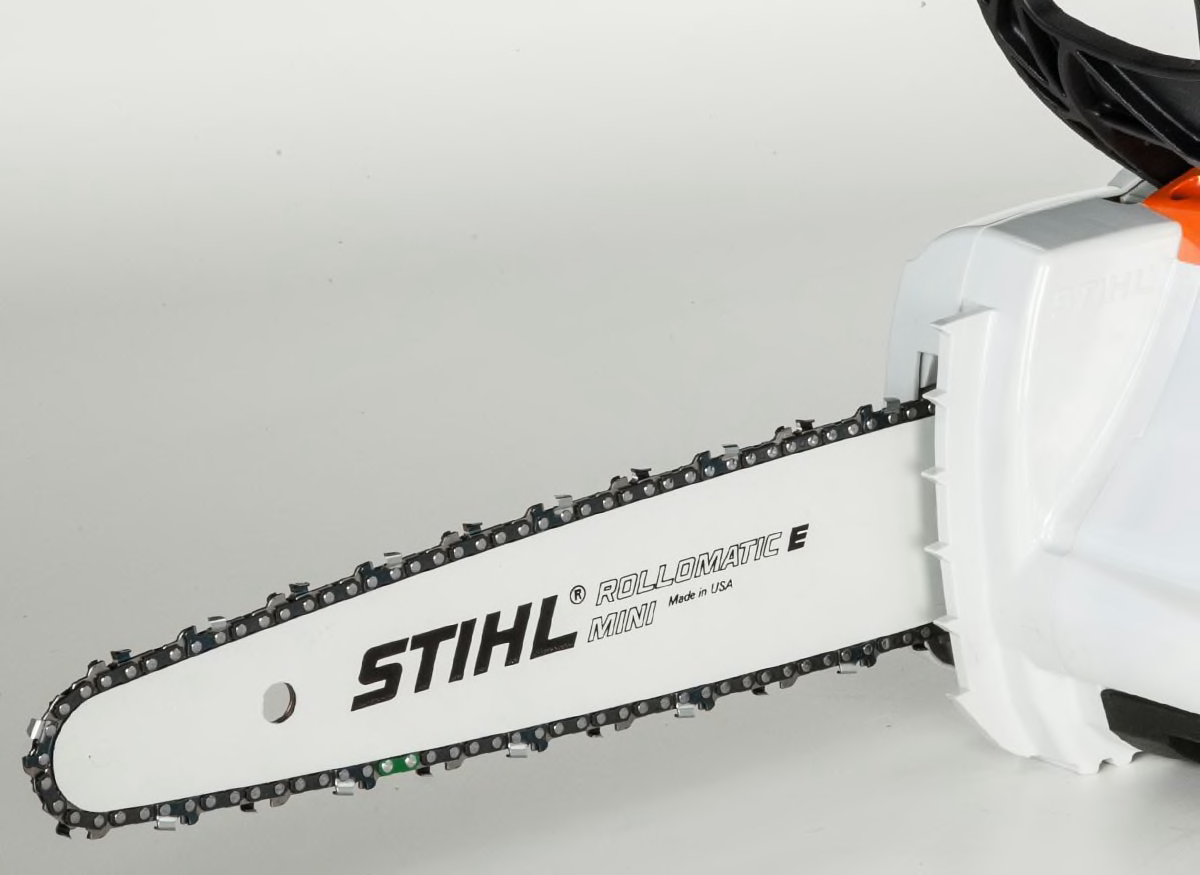
Reduced-Kickback Chain
Extra guard links and a less aggressive cutting profile help keep the chain from taking too large a bite, which can cause kickback. Most chainsaws also have a bar with a narrow tip or nose to limit the cutting area that generates the most kickback.
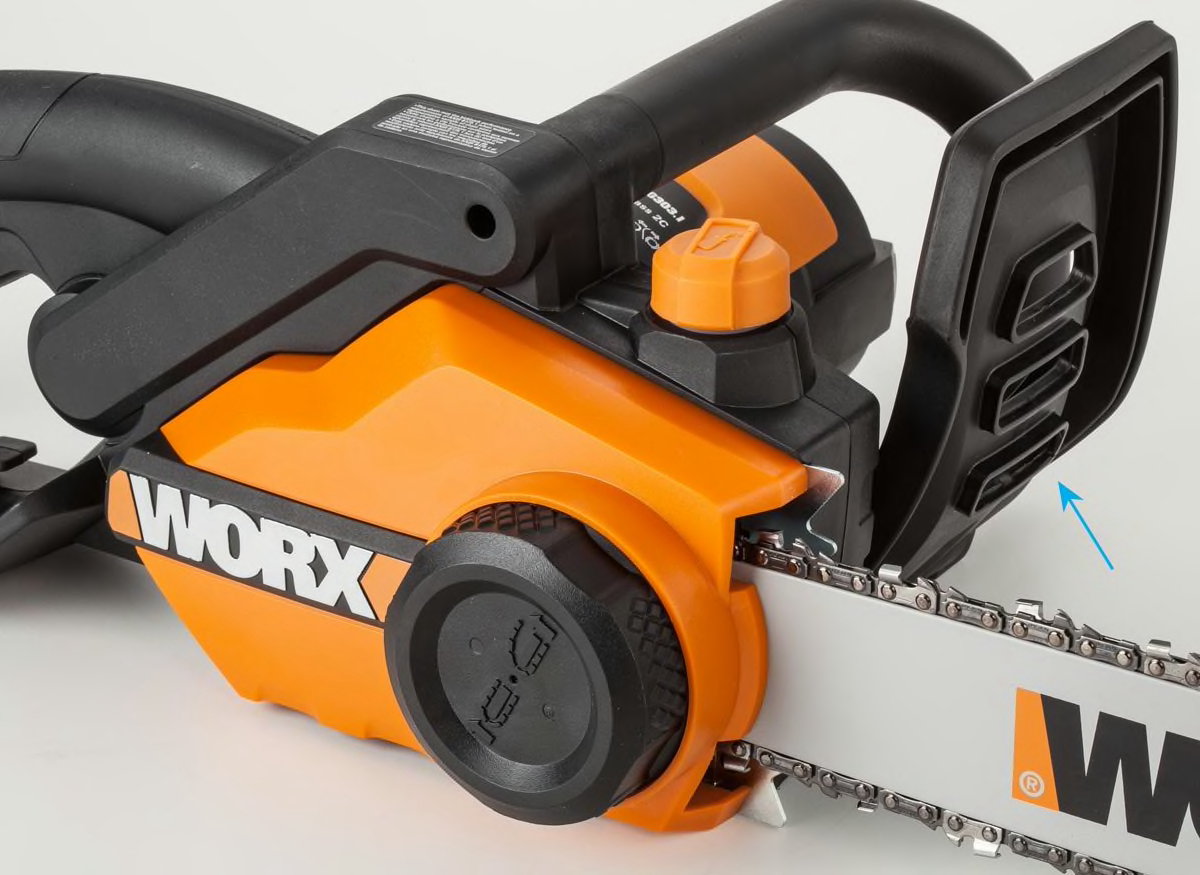
Chain Brake
This feature stops the chain almost instantly when the front hand guard is pushed forward or if the chainsaw kicks back. Most gas-powered chainsaws and many electric ones now have one.
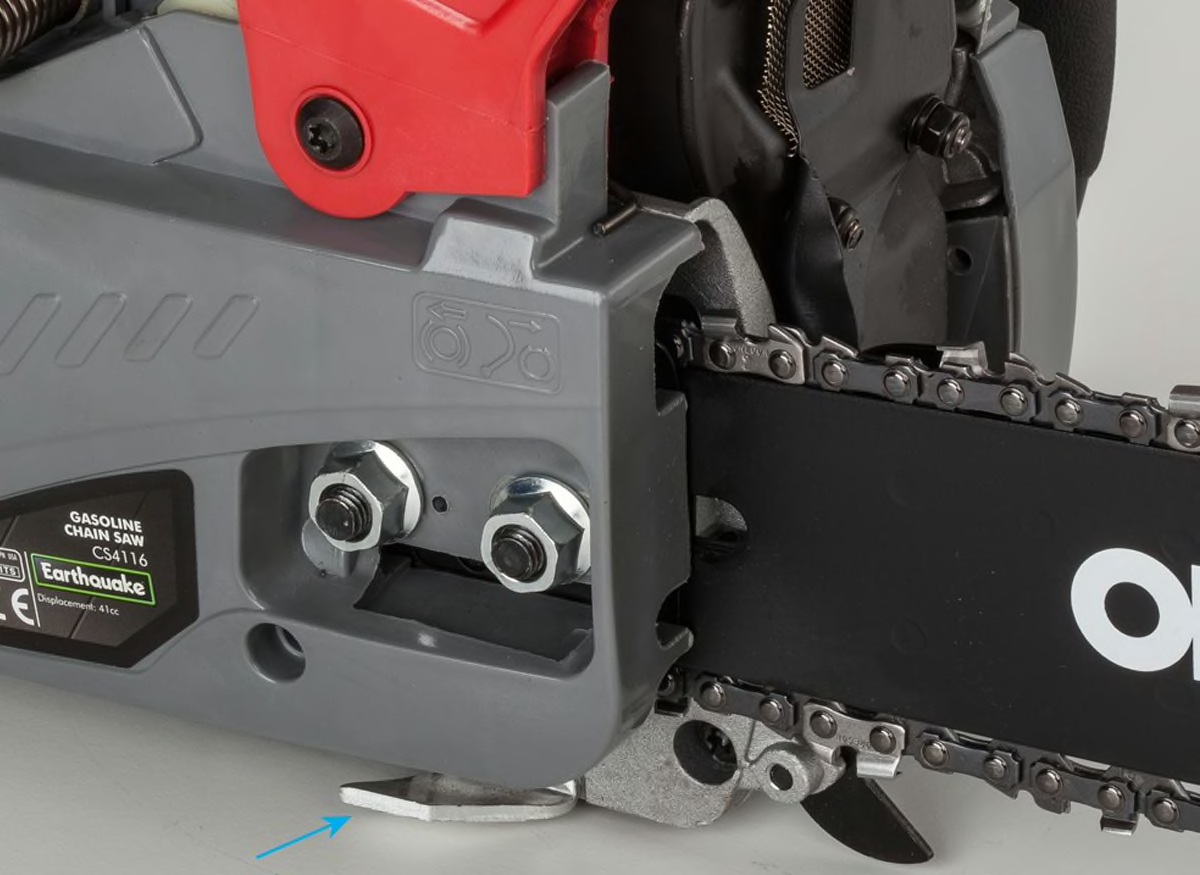
Chain Catcher
This metal extension beneath the guide bar helps keep a thrown chain from flying back toward the user. Most models have it, which is a plus, particularly if the chain is too loose due to improper tensioning and other maintenance issues.
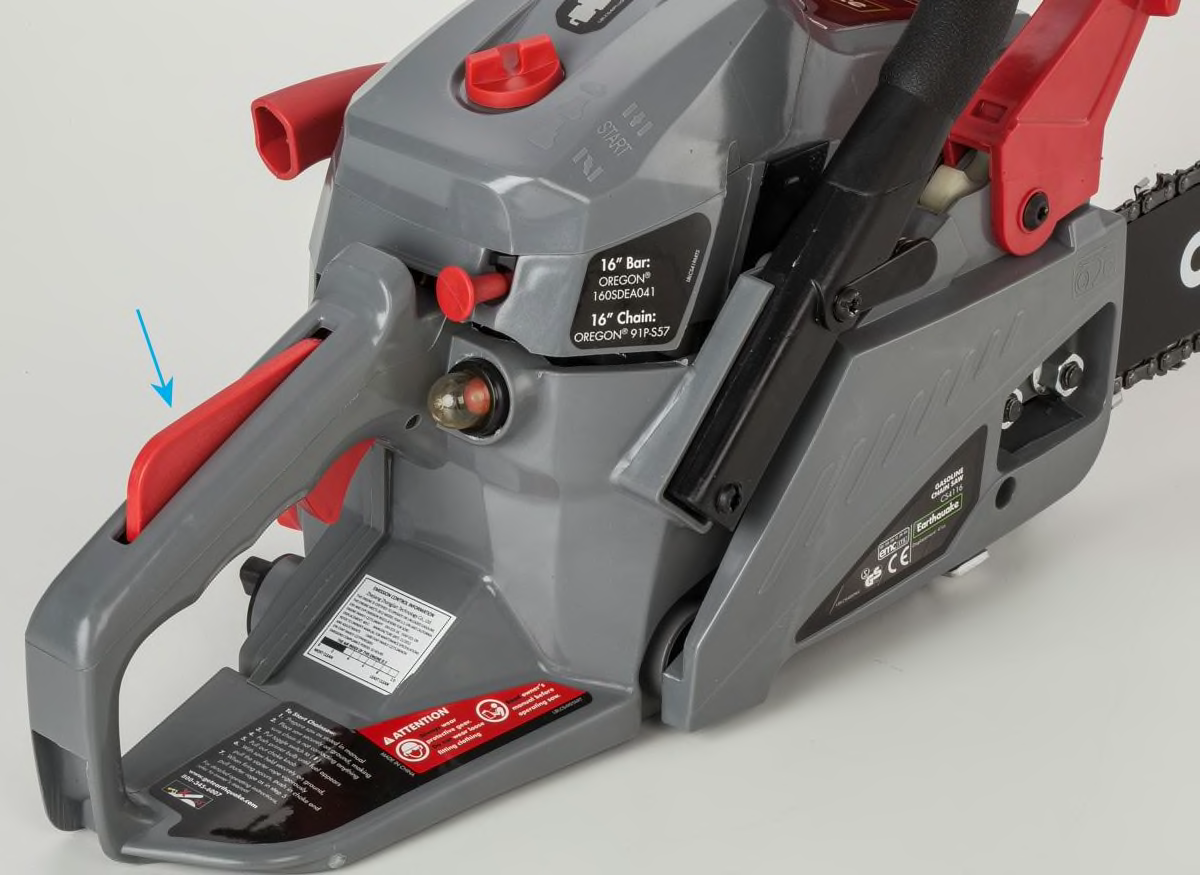
Trigger Lockout
Most chainsaws now include a separate palm switch that must be pressed before the throttle trigger engages.
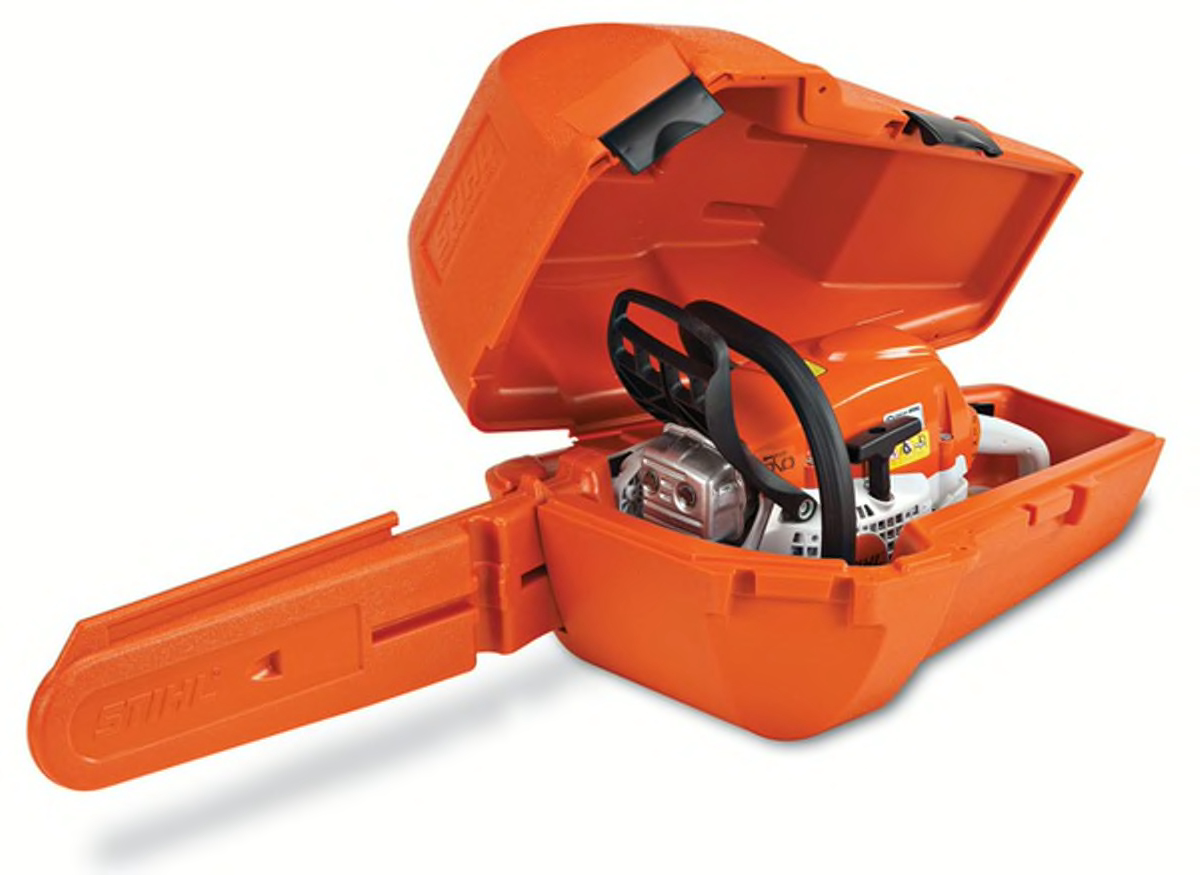
Case or Sheath
A full case or cover for the bar and chain helps protect against accidental cuts when carrying or storing the saw. A case also helps contain oil leaks from the chain. You can find aftermarket cases if your chainsaw didn’t come with one.
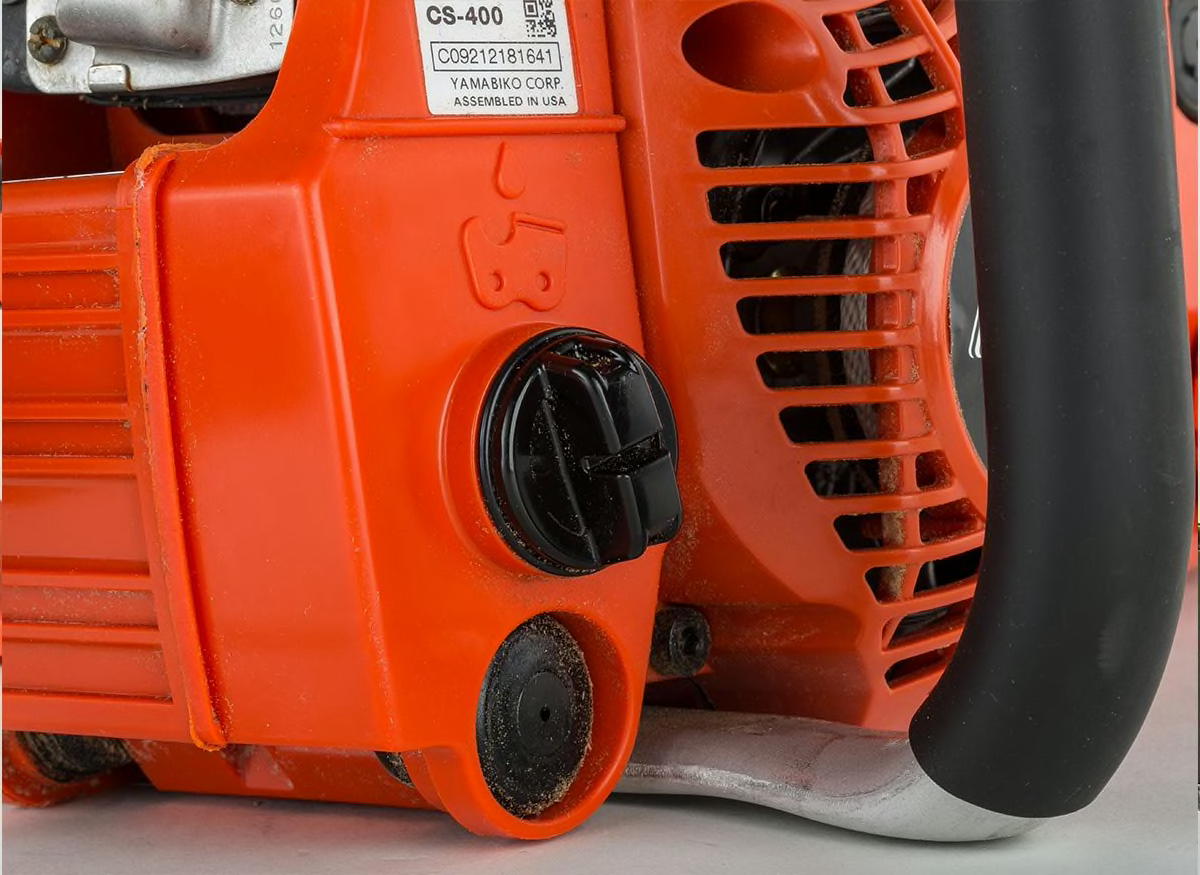
Automatic Chain Oiler
Even low-priced chainsaws now include this must-have device, which lets you keep cutting without having to stop and pump a plunger to oil the cutting bar. That’s important because it allows you to keep both hands firmly on the chainsaw. Proper oiling of the bar and chain keeps both from wearing prematurely and overheating, which can lead to a broken or thrown chain.
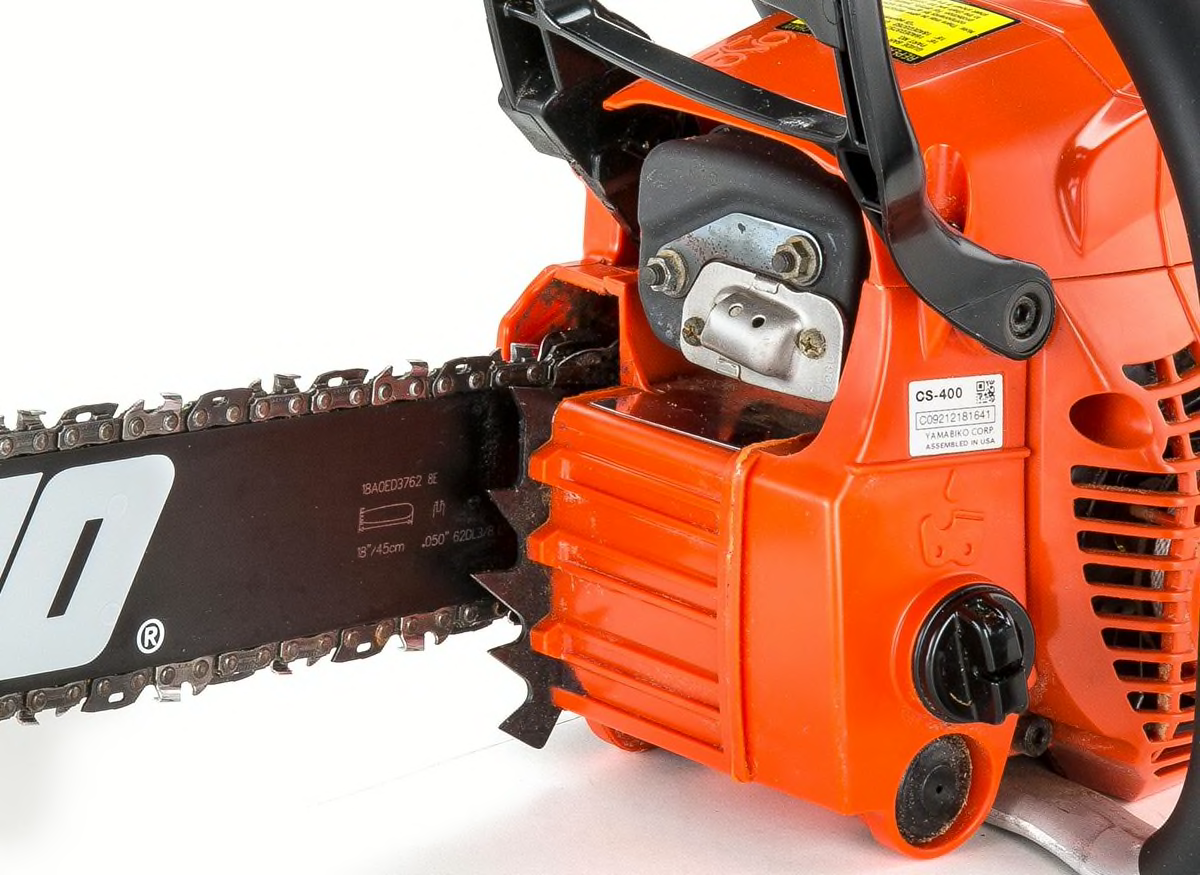
Bucking Spikes
These sharp spikes near the base of the bar bite into logs and serve as a fulcrum, letting you pivot the bar and chain downward while cutting logs on a sawbuck or log stand. Most chainsaws include this simple feature; metal spikes tend to work better than plastic ones.
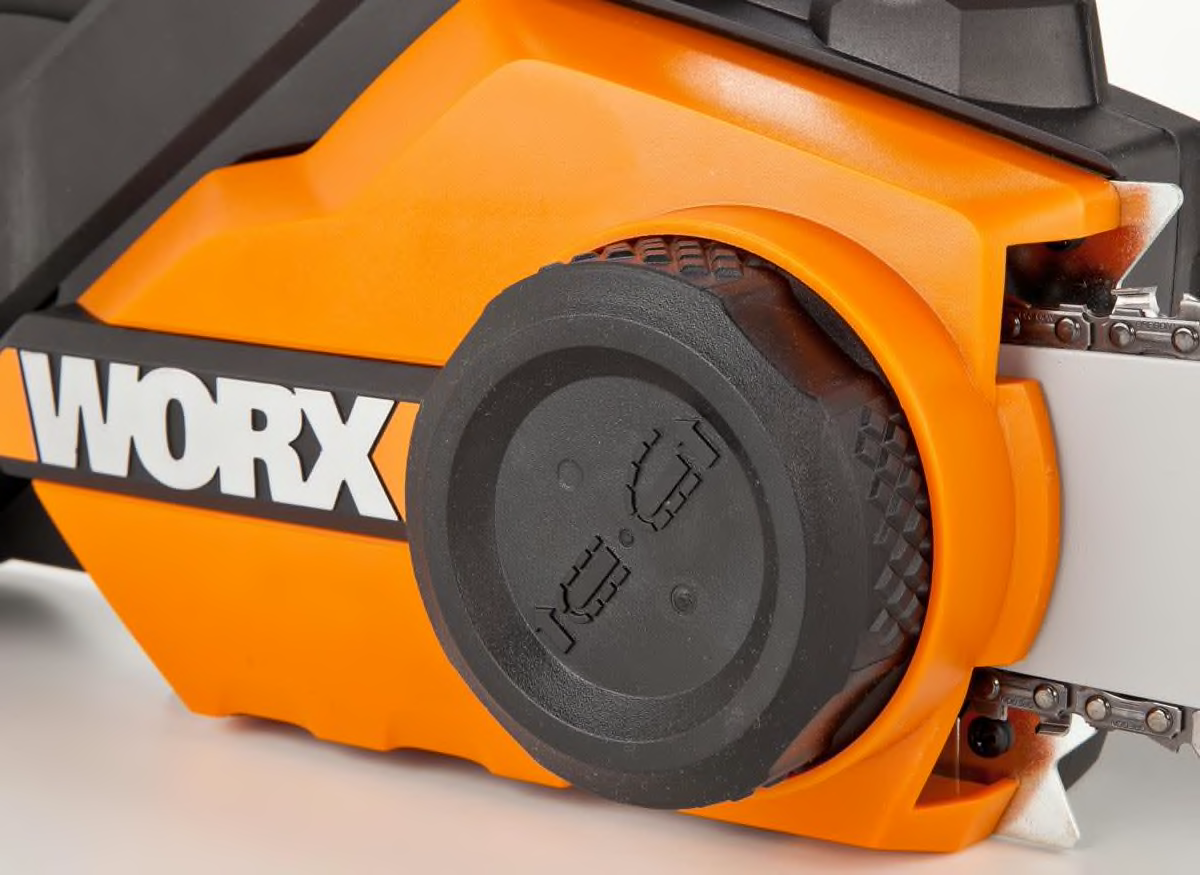
Tool-Free Chain Adjuster
A hand-operated wheel-and-crank mechanism conveniently unlocks and locks the chain bar and moves it in and out, so you can adjust the chain tension without having to use a wrench or screwdriver. It can also improve safety by making proper adjustments quick and easy.
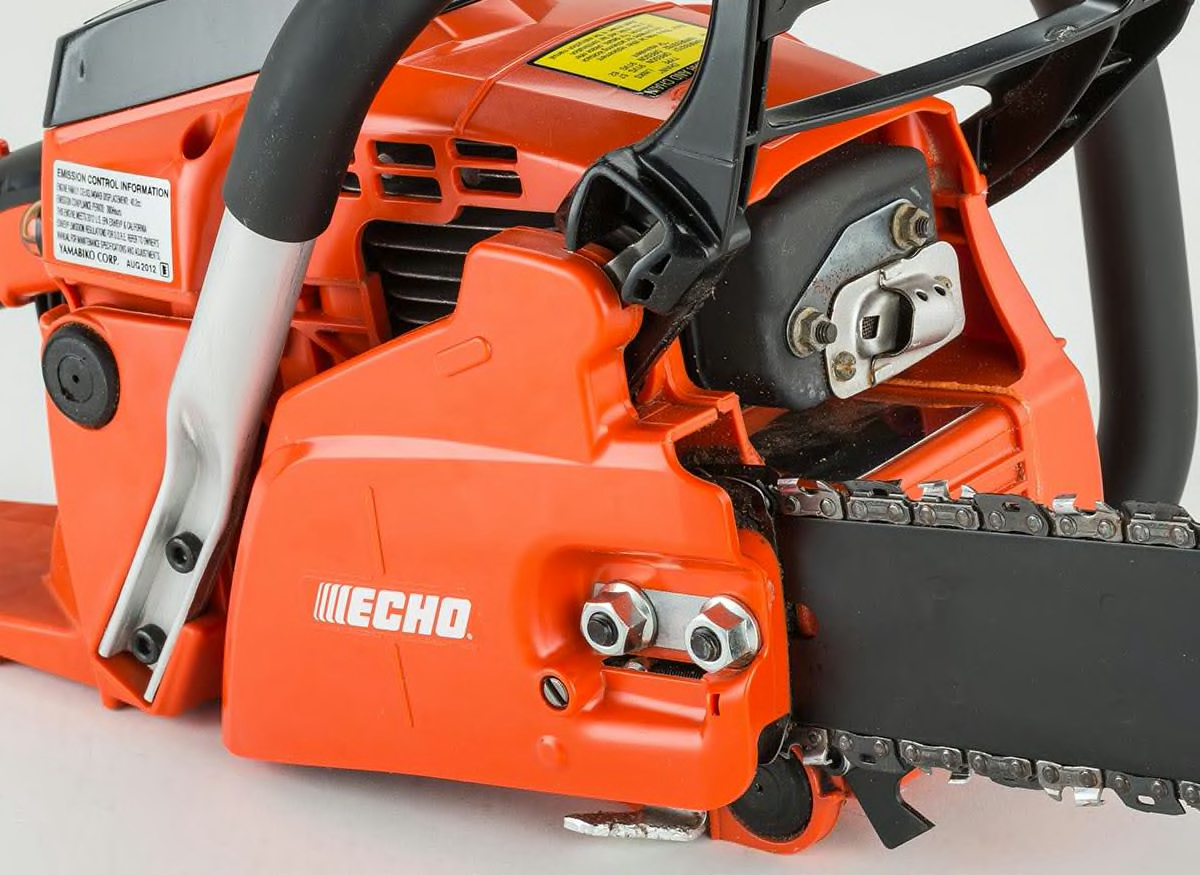
Anti-Vibration
Most gas chainsaws have rubber bushings or metal springs between the handle and the engine, bar, and chain to minimize vibration. Without this feature, vibration can make sawing both onerous and fatiguing—a concern for both safety and comfort.
Reduced-Kickback Chain
Extra guard links and a less aggressive cutting profile help keep the chain from taking too large a bite, which can cause kickback. Most chainsaws also have a bar with a narrow tip or nose to limit the cutting area that generates the most kickback.
Chain Brake
This feature stops the chain almost instantly when the front hand guard is pushed forward or if the chainsaw kicks back. Most gas-powered chainsaws and many electric ones now have one.
Chain Catcher
This metal extension beneath the guide bar helps keep a thrown chain from flying back toward the user. Most models have it, which is a plus, particularly if the chain is too loose due to improper tensioning and other maintenance issues.
Trigger Lockout
Most chainsaws now include a separate palm switch that must be pressed before the throttle trigger engages.
Case or Sheath
A full case or cover for the bar and chain helps protect against accidental cuts when carrying or storing the saw. A case also helps contain oil leaks from the chain. You can find aftermarket cases if your chainsaw didn’t come with one.
Automatic Chain Oiler
Even low-priced chainsaws now include this must-have device, which lets you keep cutting without having to stop and pump a plunger to oil the cutting bar. That’s important because it allows you to keep both hands firmly on the chainsaw. Proper oiling of the bar and chain keeps both from wearing prematurely and overheating, which can lead to a broken or thrown chain.
Bucking Spikes
These sharp spikes near the base of the bar bite into logs and serve as a fulcrum, letting you pivot the bar and chain downward while cutting logs on a sawbuck or log stand. Most chainsaws include this simple feature; metal spikes tend to work better than plastic ones.
Tool-Free Chain Adjuster
A hand-operated wheel-and-crank mechanism conveniently unlocks and locks the chain bar and moves it in and out, so you can adjust the chain tension without having to use a wrench or screwdriver. It can also improve safety by making proper adjustments quick and easy.
Anti-Vibration
Most gas chainsaws have rubber bushings or metal springs between the handle and the engine, bar, and chain to minimize vibration. Without this feature, vibration can make sawing both onerous and fatiguing—a concern for both safety and comfort.
Chainsaw Brands
Craftsman makes both gas and electric chainsaws. They come in a variety of bar lengths, from 10 to 20 inches, and are geared to the consumer market, as opposed to pros. The company’s electric chainsaws have smaller bar lengths than the ones on their gas counterparts. Craftsman is sold at Lowe’s stores as well as some Ace Hardware stores.
Echo is one of the leading brands of gas-engine chainsaws. Models come in a variety of bar lengths, from 12 inches to upward of 20 inches, and are marketed to consumers and professionals. Echo chainsaws can be purchased from dealers and at Home Depot. More recently, Echo has begun selling battery-powered chainsaws.
Ego is one of the largest manufacturers of battery-powered chainsaws. These tools come with cutting bars from 14 to 18 inches. All the saws are powered by the same 56-volt battery, and models can be purchased online or at Lowe’s stores.
Homelite has a handful of gas and electric chainsaws. Homelite chainsaw lengths range from 14 inches to 18 inches, and all models are marketed to consumers. Electric models have smaller bar lengths than their gas counterparts. Homelite chainsaws can be purchased from dealers and at Home Depot.
Husqvarna is one of the leading manufacturers of gas-engine chainsaws. Its models come in a variety of bar lengths, from 14 inches to upward of 20 inches, and are marketed to consumers and professionals. Husqvarna also makes chainsaws under the Poulan brand name. Husqvarna chainsaws can be purchased from dealers and at Lowe’s.
Jonsered is a premium Scandinavian manufacturer of chainsaws, and it made some of the earliest tools on the market. Today it makes gas saws exclusively, which are sold through private dealers.
Ryobi is a Home Depot-exclusive brand that manufactures gas, battery, and corded electric chainsaws. The tools come in a variety of configurations and with cutting bars of different lengths.
Stihl makes consumer and professional-grade gas and electric chainsaws. Its models come in a variety of bar lengths, from 12 inches to upward of 20 inches; the electric chainsaws have smaller bar lengths than their gas counterparts. Stihl sells its products exclusively through outdoor power equipment dealers.
















